Alien: Isolation
 |
One of the most terrifying games of recent years, Alien: Isolation is a must for fans of the series and on PC hardware it looks as good as it plays. To gauge performance, we benchmark a 45-second stint of the game at FHD, QHD and 4K UHD resolutions.
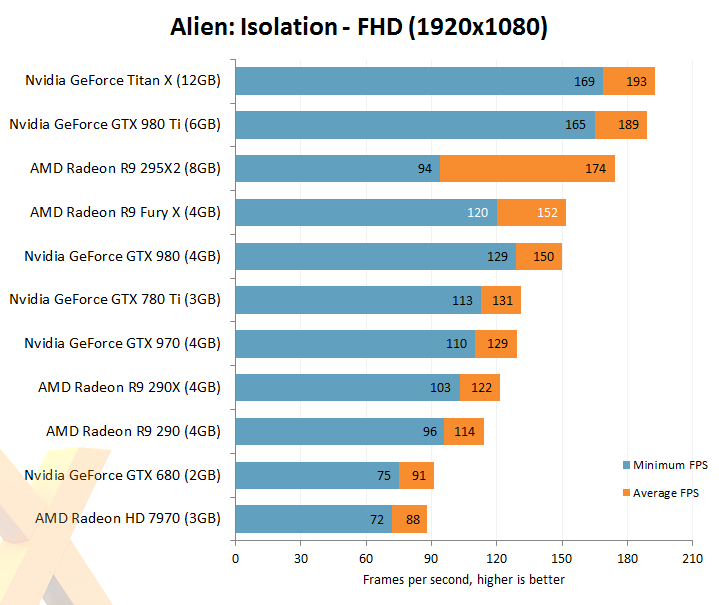
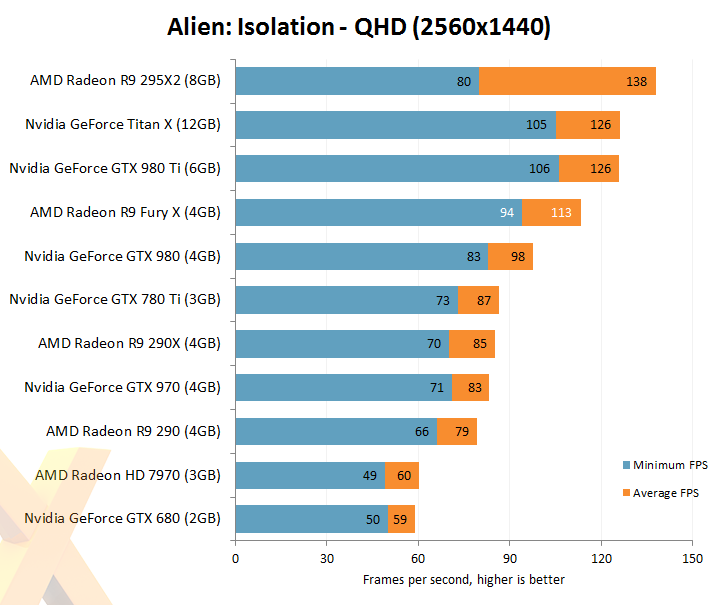
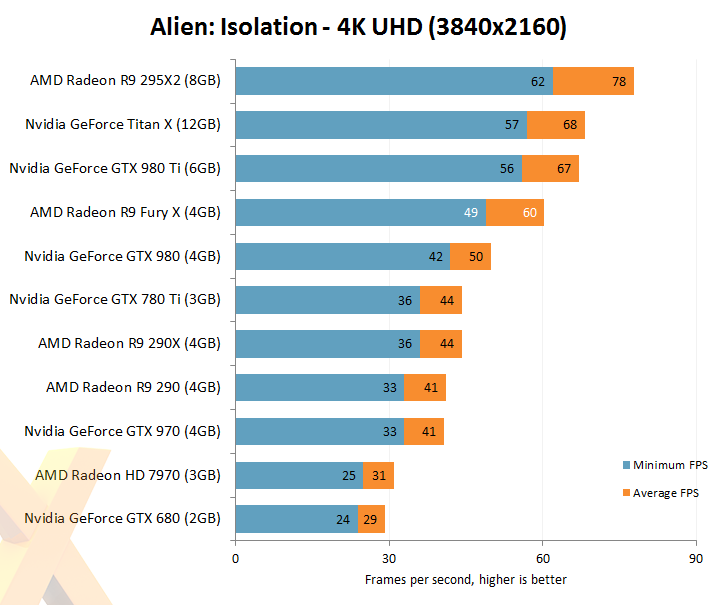
Remember how we discussed AMD's focus on shading ahead of other attributes such as ROP throughput and pure geometry? Some titles prefer the latter kind of grunt over the ability to paint pretty pixels. Alien: Isolation is simply faster on a GTX 980 Ti.
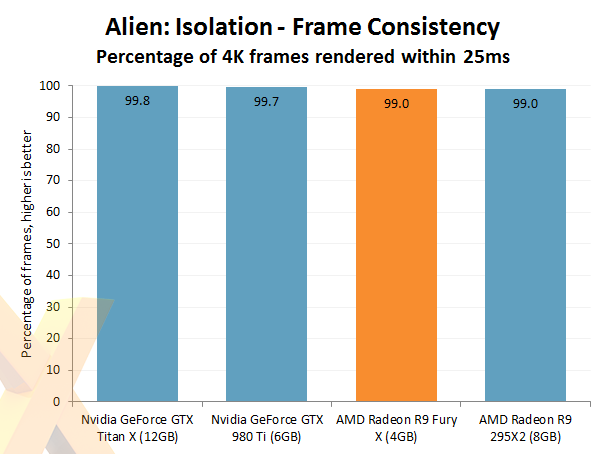
As is customary for any new GPU, we can take a look at the percentage of frames rendered within 25ms at the 4K resolution. The higher the better, intimating smoother gameplay. We've arbitrarily taken the four best cards in our grounds-up testing and plotted their relative performance against one another.
No card has any problem in pushing almost all of their frames within 25ms, equating to 40fps over a full second.
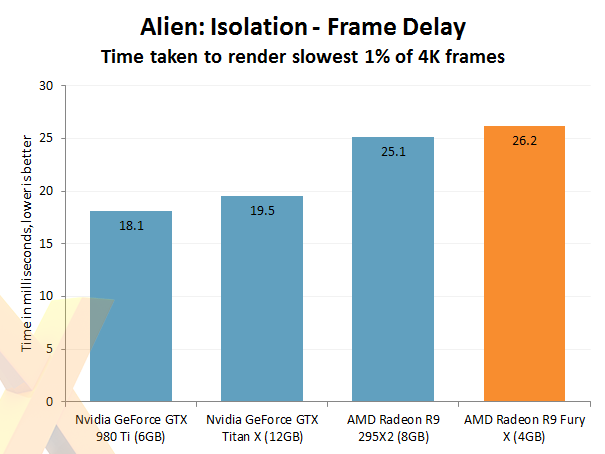
Taking the Radeon Fury X's 4GB framebuffer into account, we can also take a look at how long it takes the GPU(s) to render the slowest one per cent of frames. The number, in milliseconds, shows the time taken at the 99th percentile, and any frames in the last one per cent take longer than what's shown. The ideal scenario is to have this number as low as possible.
Generally speaking, higher average framerates also tend to have the lowest frame delays. The twin GTXs are better than the two Radeons - the worst one per cent of frames start at 26.2ms for the Fury X.
Winner: GeForce GTX 980 Ti.









